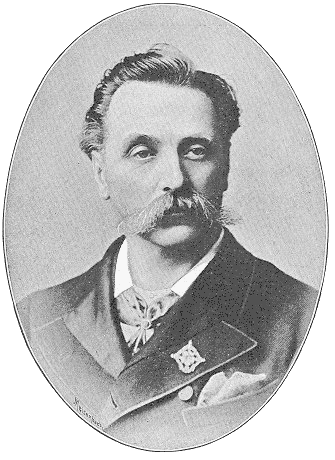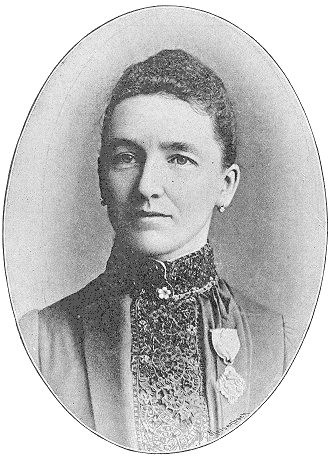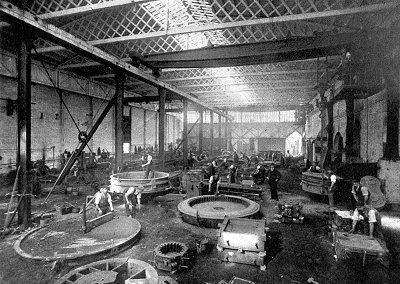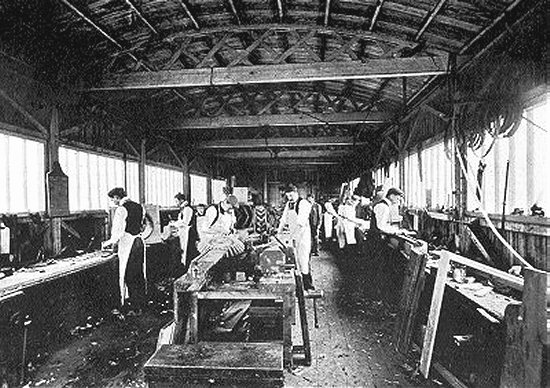|
Ironmasters and Ironmongers who forged a
city of prosperity
Iron was what made the wealth of Lloyds of
Birmingham. And it was iron that made the wealth of their
relatives - the Crowleys of Stourbridge and the Parkes and
Fidoes of Wednesbury. All Quakers in the late 18th and early
19th centuries they played a vital role in preparing the way for
the Industrial Revolution that would blacken south Staffordshire
by day and redden it by night.
As ironmongers and iron masters they
supplied the pig iron from their furnaces for their forges that
converted it into bar iron - and they owned the slitting mills
that then cut it into thin rods to be sold to nailers and other
metal workers. Then they would buy the finished products and as
merchants sell them in London, Bristol and elsewhere.
Often from humble beginnings, by hard work,
talent, enterprise, initiative and an unquenchable desire to
succeed, these men gained riches for their families and through
their marriages to wealthy heiresses. This immense wealth
allowed them to move away from trade and manufacturing and to
buy estates and become part of the landed elite, as with the
Crowleys; or else to move into banking, as with the Lloyds.
Yet one branch of that family that hailed
originally from Dolobran in Wales remained true to iron: the
Lloyds of Wednesbury. Through their descent from Richard Parkes,
the Lloyds owned valuable property around the town.
|
 |
Wilson Lloyd was the son of
Samuel Lloyd the third. Born in Wednesbury in 1835, he
went on to become active both in the trade and public
life of the town.
A distinguished mayor from
1888-90 and later alderman, he was elected the first
Conservative member of Parliament for Wednesbury. |
| Wilson Lloyd's wife was a
daughter of Dr. Underhill of West Bromwich, and was said
to be the most popular mayoress Wednesbury ever had. |
 |
|
Steam
A Quaker, like the Lloyds, Parkes had
married Sarah, the daughter of Henry Fidoe, who ran one of the
largest rod iron accounts in Staffordshire. Parkes himself
became a successful ironmonger and with his profits purchased
local surface and mining rights. These were not exploited much
during most of the 18th century, simply because of the inability
to effectively pump out the water that flooded coal and other
mines that were much below the surface. But the development of
the steam engine transformed this situation and made mineral
rights a most valuable possession.
So it was that in 1818, Samuel Lloyd the
second went to live in Wednesbury to look after the family's
interests in Lloyds, Fosters & Company, which operated coal and
ironstone mines and clay pits for bricks and tiles. Samuel was
the great grandson of the influential Sampson Lloyd II, who had
expanded the family's interest in the iron trade and moved them
into banking.
The young man was well aware of his
heritage, for his house in Wood Green was called Dolobran, after
the ancestral home of the Lloyds in Montgomeryshire in Wales.
Nearby Myvod Road brings to mind the village of Meifod near to
Dolobran. Young Samuel was a worthy successor in powering
forward Lloyds, Fosters & Company. In so doing he was helped by
his younger brother, who was also called Sampson.
As for the Fosters they were first cousins
of the two men, being the sons of their aunt, Sarah Lloyd who
had married Joseph Foster.
|

Lloyd's Bank in Wednesbury, which
was formerly the home of an Edward Wright. It became a
private school and then the Wednesbury Old Bank of
Messrs Phillip and Henry Williams before it was taken
over by Lloyds. |
| This photo of the heavy
foundry at the James Bridge Works is from the South
Staffordshire Institutions and Trades Illustrated of
about 1900. |
 |
|
Because the Wednesbury site had an
abundance of iron ore as well as coal, Lloyds, Fosters & Company
quickly began an ironworks at the Old Park Works. Blast furnaces
were started in about 1825-26, and the business went on to
produce half of Wednesbury's output of pig iron. From 1843,
Samuel Lloyd, known locally as Quaker Lloyd, was joined by his
son, Samuel III. In his history of the Lloyd family, the younger
man remembered that by the time his father died in 1862 the
business had become "large and prosperous; engineering works and
forges and mills had been erected, and the weekly wages amounted
to £3,000".
Quaker Lloyd was deeply knowledgeable about
his industry and was a leading member of the Institution of
Mechanical Engineers in the West Midlands, but in Wednesbury he
was highly-regarded as a fair and kind employer, a leading
figure in local government, and a philanthropist who supported
many good causes. His standing in the community was made plain
on the day of his funeral on September 10. Quaker Lloyd was
conveyed from his family residence in a plain hearse, befitting
his faith, to a train that took his body to the Non Conformist
cemetery in the Jewellery Quarter in Birmingham.
Memory
As the cortege passed through Wednesbury
the shutters of most places of business were partially closed,
while the blinds of houses were drawn as a mark of respect. It
was stated that "the town generally wore the appearance of
sincere regard for the memory of the departed". And when the
funeral party arrived in Hockley, it was joined by 500 clerks
and workers from the Old Park Works.
After the death of Quaker Lloyd, his son,
Samuel the third, ran the businesses with other members of the
family. As well as producing pig iron, their company now
manufactured bridgework, turntables, railway wheels and axles.
For all that diversity
Samuel later recalled that "almost as fast
as money was made it was spent in what seemed to be needful
outlays to supply the increasing requirements of customers, so
that no great amount of money was available for distribution
among the partners".
Sadly the business fell victim to a major
customer who failed to pay for its order.
In 1861-62 the Corporation of London
decided to erect Blackfriars Bridge across the Thames. The
contract was awarded to a firm in the capital, which "ordered
the necessary iron work from Lloyds, Fosters & Co, and agreed to
pay cash monthly for each previous month's deliveries".
Unhappily "when the first monthly payment became due, they could
not meet it, but sent instead their four months' promissory
note, which also they failed to meet".
Samuel Lloyd the third "strongly urged that
deliveries to them should cease, for it showed that a crisis had
arrived, and that we ought to adhere to the terms of our
contract". His advice was ignored by his partners. They
continued to supply the contractor and although the bridge was
opened by Queen Victoria in 1869, Lloyds, Fosters & Co. lost the
huge sum of a quarter of a million pounds.
This led to the sale of the Old Park Works
to the Patent Shaft and Axletree Co. Limited. Fortunately as
Samuel Lloyd recalled: "I left one iron business only to
establish others in which, in their turns, my sons are now
occupied, so that Lloyds are still true to iron and are likely
to be so, as my sons take kindly to different branches of the
business. Ironmasters have always been among my heroes and
friends from George Stephenson, whom I heard lecture on 'The
Fallacies of the Rotary Engine', to Sir William Bessemer and Mr.
Andrew Carnegie. I worked with Sir William Siemens in his
experiments towards utilising the waste heat of furnaces. I will
not say that iron has entered into my soul, for that would not
be true; but I am deeply interested in it, and was much pleased
the other day to learn that George Washington's father and
Abraham Lincoln's great, great grandfather were both
ironmasters."
In particular it was the firm of F. H.
Lloyd that ensured that the deep bond between the Lloyds, iron
and Wednesbury was not broken. Francis Henry Lloyd was the first
cousin of Samuel Lloyd III, being the son of Sampson Lloyd of
Wednesbury. Born in the Black Country in 1844, he went on to run
the Darlaston Iron & Steel Company with his father. This fell
before the onslaught of the depression that began in the later
1870s, but as the decade closed, F. H. went on to set up a small
foundry. It grew rapidly and successfully to become F. H.
Lloyd's James Bridge Steel Works.
|
|
Castings
Although located toward the edges of
Darlaston and having a Darlaston telegram address, F. H. Lloyd
always advertised itself as near Wednesbury because of the
historic links between the family and that town. In the early
20th century the company began making small castings and in the
Great War produced a great amount of cast steel shells. Then in
the 1930s, F. H. Lloyd began to produce heavy castings for
mechanical excavators and earth-moving machines and in 1938 it
installed its first electric arc furnace.
Such developments ensured that the firm
played an even more important role during the Second World War
than it had in the Great War. It manufactured approximately
80,000 tons of finished steel castings. This total included
2,000 turrets for the Churchill tank and 8,000 tons of bomb body
castings. The bomb that they were made for was one of the most
effective in the war for the British. Other castings were used
for the excavating and mining machinery, gun mountings, ships,
electric generating plant and road rollers.
|
 |
The F. H. Lloyd Pattern shop
in around 1900. |
|
Two outstanding features of war-time
production were the importance both of female workers and
training. Another was the loyalty of a skilled, experienced and
motivated workforce. This was a characteristic that had marked
out the Lloyd companies in the Black Country since the time of
Quaker Lloyd and it was remarked upon several times in the 1950s
by the chairman and managing director, F. N. Lloyd.
Expansion at the James Bridge Works
continued into the 1960s with a new heavy foundry and a 30-ton
melting furnace. The company became renowned for its heavy
castings, and despite often difficult trading conditions, it
thrived and took over businesses elsewhere. In 1970 it was even
featured in The Guardian because of its fabrication of five
steel frames that would form the body of a 5,000 ton hydraulic
press that would produce concrete slabs 20ft by 10ft and l0ins
thick. Each frame weighed 30 tons and was also machined at
Wednesbury.
By 1975, the steel industry in the UK
had about 70 firms and 90 foundries, many of which were small.
Consequently the bulk of output was from foundries that produced
more than 1,000 tonnes a year. In fact, four firms dominated the
industry, accounting for 55 per cent of output by value. The
largest of them all was F. H. Lloyd of Wednesbury, which
produced almost 23,000 tonnes a year. It was an astonishing
achievement but sadly the end was nigh.
The later 1970s brought major economic
problems and a rapid decline in the demand for steel. Short-time
working at the foundries was brought in during 1980 and sadly
two years later the historic firm that was so linked with
Wednesbury was felled by a recession which overwhelmed so many
great manufacturing names in the 1980s.
Gone it may be, but the skills and talents
both of the Lloyds and their workers should never be forgotten.
|
 |
Return to
the
previous page |
|